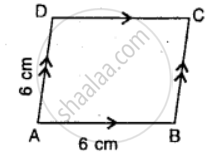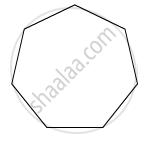Advertisements
Advertisements
प्रश्न
What conclusion can be drawn from part of given figure, if BD bisects ∠ABC?
उत्तर
If BD bisects ∠ABC, then ∠ABD = ∠CBD.
Because an angle bisector bisects an angle into two equal angles.
APPEARS IN
संबंधित प्रश्न
ABCD is a parallelogram, AD is produced to E so that DE = DC and EC produced meets AB produced in F. Prove that BF = BC.
In a quadrilateral, define of the following Adjacent angles .
Complete of the following, so as to make a true statement:
A quadrilateral has ..... vertices, no three of which are .....
In the given figure, PQRS is an isosceles trapezium. Find x and y.

In a trapezium ABCD, side AB is parallel to side DC. If ∠A = 78° and ∠C = 120. find angles B and D.
In an isosceles trapezium one pair of opposite sides are _____ to each Other and the other pair of opposite sides are _____ to each other.
Write, giving reason, the name of the figure drawn alongside. Under what condition will this figure be a square.

Observe the figure below and find out their name.

Can we have two obtuse angles whose sum is an acute angle? Why or why not?
Investigate :
Use strips and fasteners to make a triangle and a quadrilateral.
Try to push inward at any one vertex of the triangle. Do the same to the quadrilateral. Is the triangle distorted? Is the quadrilateral distorted? Is the triangle rigid?
Why is it that structures like electric towers make use of triangular shapes and not quadrilaterals?
